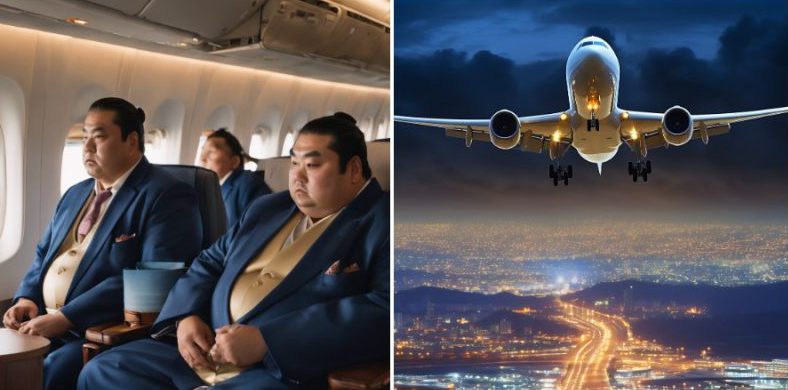Sumo Wrestlers’ Aircraft Weight Limits Caused Flying Issues

©️ Gencraft / Freepik
In a rare turn of events, Japan Airlines (JAL) found itself grappling with an unexpected challenge as it realized that two of its planes were at risk of exceeding weight limits. However, the culprit was not excess baggage, but rather the hefty presence of sumo wrestlers on board. The airline had to take the extraordinary step of arranging a special flight to accommodate the weighty athletes.
Aircraft Weight Limits
The CNN affiliate TV Asahi reported the incident where 27 sumo wrestlers, scheduled to participate in a sports festival on Amami Oshima, an island in southern Japan, were set to board Boeing 737-800 flights from Haneda airport in Tokyo and Itami airport in Osaka. The concerns arose when airline staff discovered that the average weight of the sumo wrestlers was approximately 120 kilograms. This was significantly more than the average passenger weight of 70 kilograms.

Faced with potential fuel capacity issues due to weight restrictions on the smaller aircraft used for domestic flights, JAL had to make quick decisions. The Amami airport’s limited runway further complicated matters, ruling out the possibility of deploying larger planes. To address this challenge, the airline organized an additional flight for the sumo wrestlers. 14 of them had to fly from Itami to Haneda to join the special flight.
For CNN affiliate TV AsahiJAL described the situation as “extremely unusual.” They clarified that such special flights due to weight restrictions are a rare occurrence. The airline’s spokesperson emphasized the necessity of these measures to ensure the safety and operational efficiency of the flights.
Weighing 140, 130, and 110 kilograms respectively, they humorously remarked on the challenges of squeezing into the aircraft seats. The middle seats were especially a problem. Despite the sumo wrestlers’ aircraft weight limits and the tight fit, the wrestlers expressed gratitude for the support they received.
The incident with Japan Airlines sheds light on the intersection of traditional sports and modern air travel, showcasing the challenges airlines may face when dealing with exceptional passenger circumstances. In a world where passengers are not routinely weighed before flights, this event underscores the need for airlines to adapt to diverse passenger profiles.

The Ancient Sport of Sumo
Sumo wrestling, deeply rooted in Japanese history, is known for its lack of weight restrictions. While there is no minimum weight requirement to become a sumo wrestler, the sport has traditionally been dominated by heavier athletes. The unique nature of sumo training involves daily practices and communal living in designated sumo stables. This contributes to the wrestlers’ robust physique.
While sumo wrestling embraces its historical roots, it continues to evolve. Recent adjustments to height and weight recruiting minimums reflect the changing landscape of the sport. The origins of sumo can be traced back to ancient Japanese ceremonies. Historians link its roots to Shinto, a local religion. Over the centuries, sumo transformed from ceremonial contests to a professional sport, complete with unique rituals and maneuvers.

The heavyweight champion, Ōrora, of Russian descent, holds the record as the heaviest sumo wrestler in history. He reached an impressive 293 kilograms at his peak. As the airline industry navigates unforeseen challenges, the tale of Japan Airlines and its special sumo flight adds a humorous and distinctive chapter to the broader narrative of air travel and cultural traditions in the Land of the Rising Sun.
You might also want to read: What Does It Take to Win Toe Wrestling Championships?



